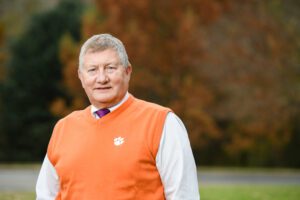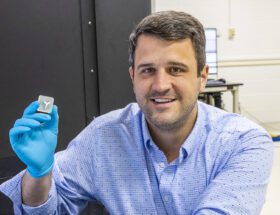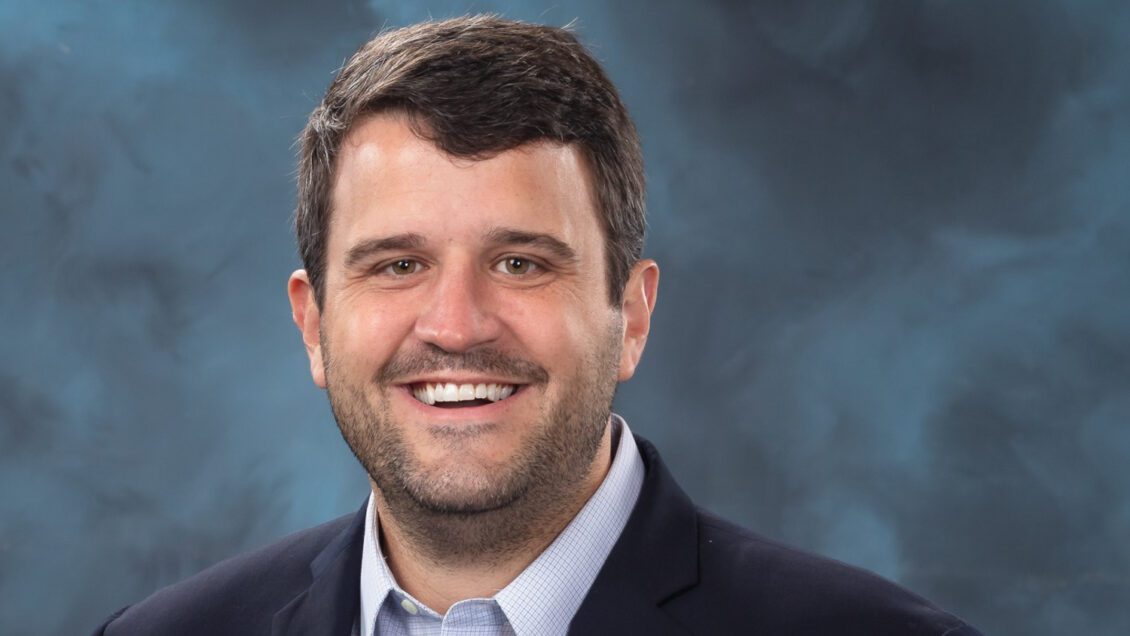Clemson University Chemistry Professor Ken Marcus knows what makes a good researcher — he’s advised nearly four dozen Ph.D.s during his career.
He could tell that Benjamin Manard had that innate talent. Manard was always willing to go “elbow deep” and “make things happen,” Marcus said.
“Ben was what I would call a lab rat,” Marcus said. “He’s the classic example of a Ph.D. being a research degree. It’s not a classroom degree. And that’s my favorite model. I can teach good students to be really good researchers, but just because you are a straight A student does not mean you know how to do research.”

Manard, who earned his Ph.D. in analytical chemistry from Clemson in 2014, will receive the Lester W. Strock Award from the Society of Applied Spectroscopy at an awards ceremony in late October. Marcus received the same award nearly a decade earlier.
The award celebrates researchers who have contributed to the field of analytical atomic spectrochemistry through notable publications. It recognized Manard’s advancements in methodologies, which include new sample introduction methods and innovative detection strategies.
Still working together
Both Manard and Marcus work on developing instruments or ways to take measurements for nuclear forensics. And the former teacher-student duo are now collaborators. They’re working on a five-year project to analyze different veins of uranium.

Manard received his B.S. in chemistry from Georgia Southern University before earning his Ph.D. from Clemson. While at Clemson, he also had an appointment as a visiting scientist at Lawrence Berkeley National Laboratory. He went on to complete a Glenn T. Seaborg postdoctoral research fellowship at Los Alamos National Laboratory before serving as a staff scientist there and later at Oak Ridge National Laboratory (ORNL). Now a senior scientist, Manard leads ORNL’s chemical and isotopic mass spectrometry group.
He has authored more than 60 journal articles, including 10 cover features. He has recently published in the area of inductively coupled plasma mass spectrometry, where he has been able to take particles as small as nanoparticles or micron-sized particles and characterize them for elemental analysis and isotopic information. These new measurement methods could be readily implemented in national security and environmental applications.
Tinkering skills
Manard enjoys using his “tinkering” talents in the lab, where he works to solve problems that stump other departments. For example, biologists at ORNL were developing enzymes to capture critical materials. Manard studied this new
development and realized the enzymes needed to be examined on the particle level, rather than a bulk-type analysis.
In part, Manard attributes his success to Marcus’s mentoring style, where graduate students are challenged to think independently and problem-solve.
Marcus, who became a chemistry professor at Clemson in 1986, will graduate his 44th Ph.D. student this year. He credits this accomplishment to his students’ exciting research topics, hard work and the fun they have along the way.
As part of his work with Marcus, Manard meets with students in Marcus’s lab monthly to discuss their progress and work through difficulties.
“I think that’s probably one of his best skills, even though he’s not a professor. He is really good at teaching young people,” Marcus says of his former student. Manard also teaches young scientists at ORNL, which encourages employees to mentor the next generation of scientists. He hosts a variety of undergraduate students, graduate students, and post-doctoral researchers.
Get in touch and we will connect you with the author or another expert.
Or email us at news@clemson.edu

